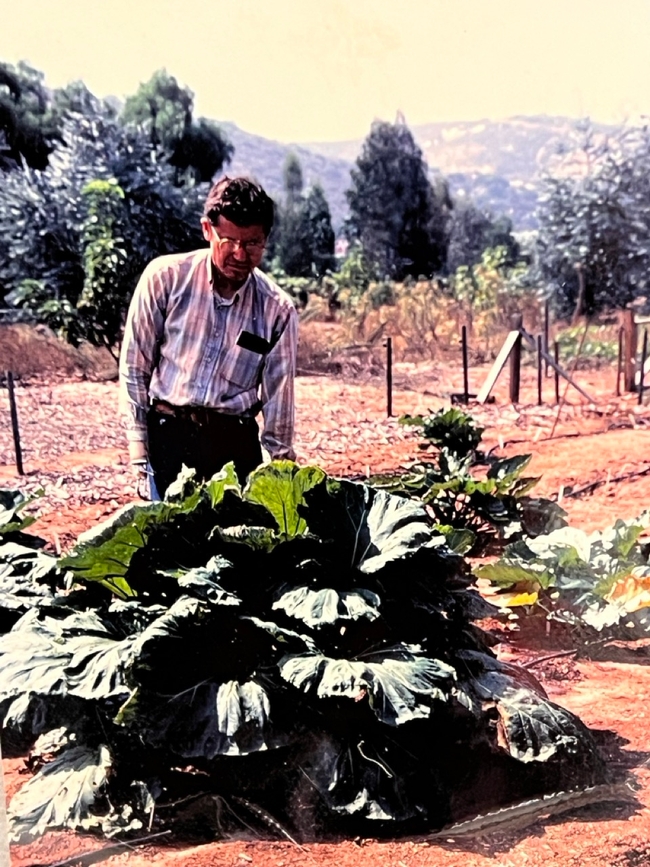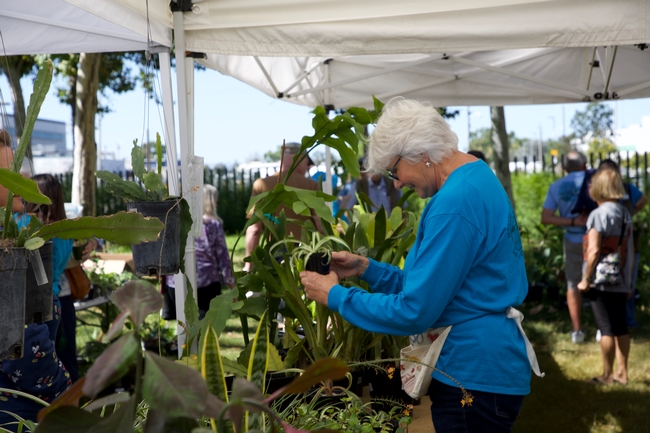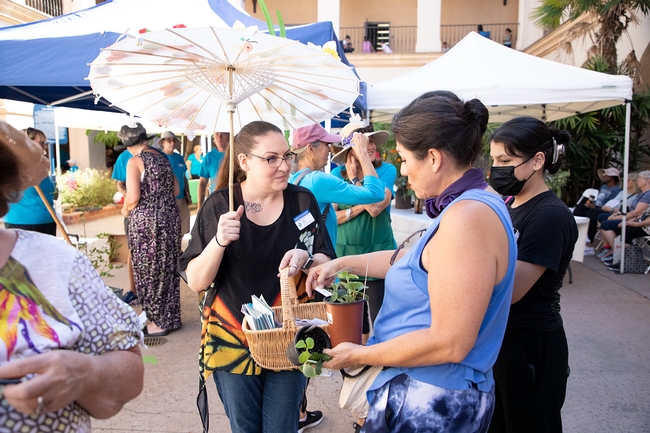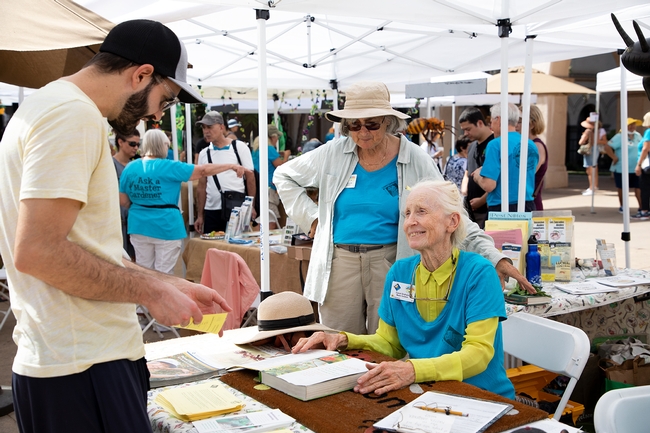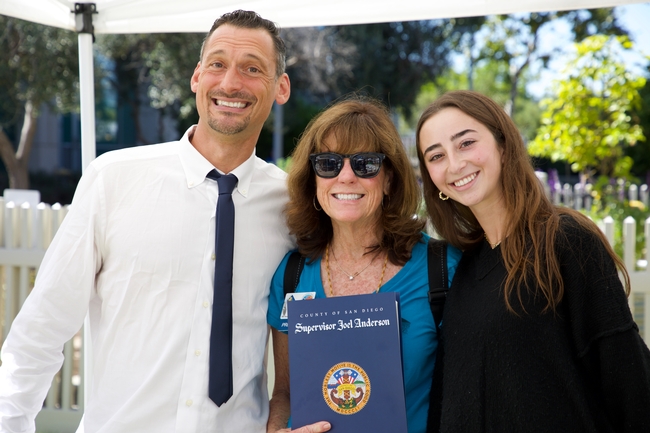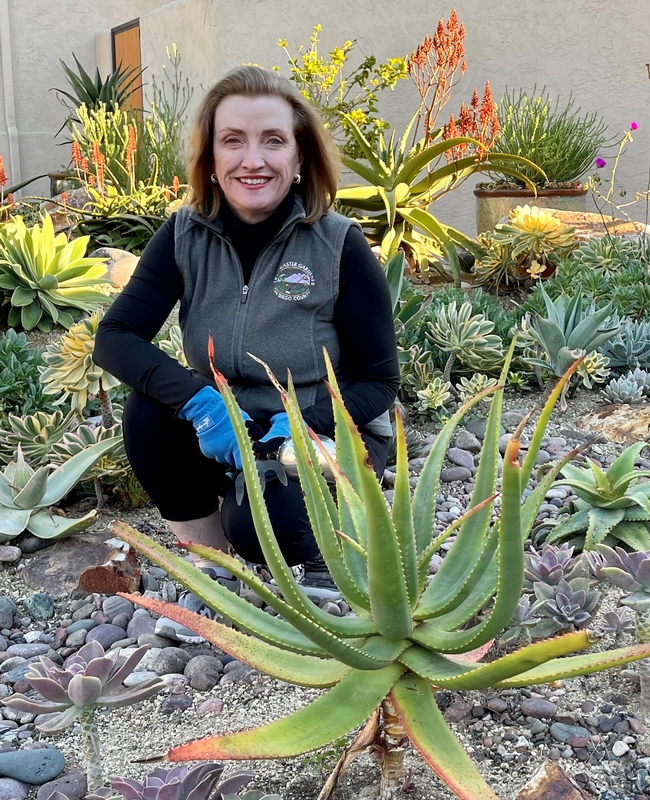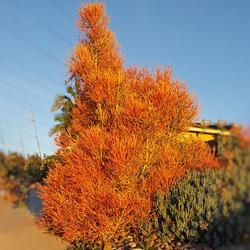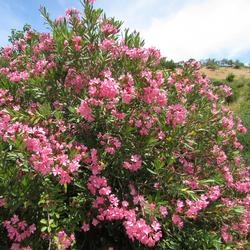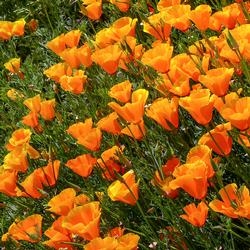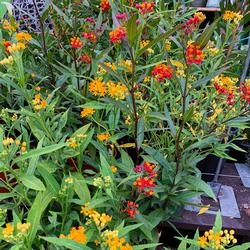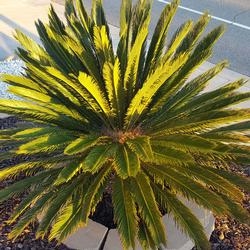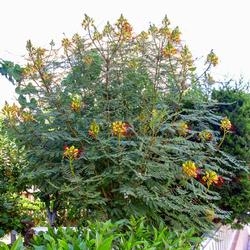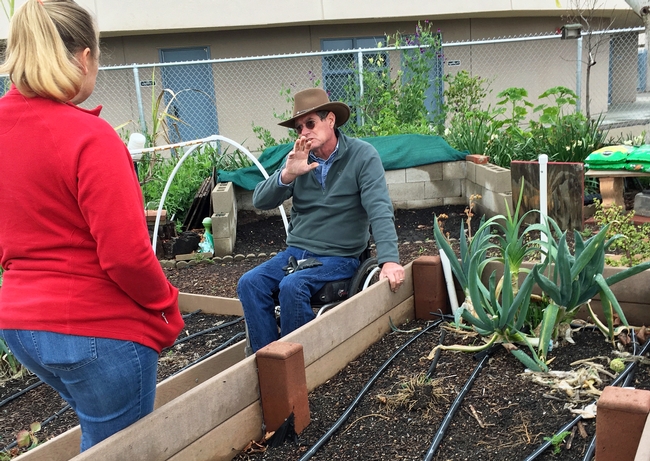Posts Tagged: gardeners
UC Master Gardeners of San Diego celebrates 40 years of service to community
For 40 years, the University of California Master Gardener Program of San Diego County has upheld its mission of providing research-based information about home horticulture and pest management to the public, while earning and sustaining the community's trust in doing so.
“People trust UC Master Gardeners to provide accurate advice on gardening because they are trained by UC ANR [UC Agriculture and Natural Resources],” said Vincent Lazaneo, emeritus urban horticulture advisor and the first UC Master Gardener program coordinator for San Diego County.
The UC Master Gardener program, a public service and outreach program under UC ANR, is administered by local UC Cooperative Extension offices and outreach is provided by trained volunteers. In 1983, the UC Master Gardener program of San Diego County started with about 30 volunteers. Today, more than 350 volunteers serve the program, which is now managed by program coordinator Leah Taylor.
In San Diego, UC Master Gardeners have had a significant presence in schools, where they encourage an appreciation for plants and our planet; at the county fair where they field hundreds of questions related to plant care; and in community spaces such as Balboa Park and the Carlsbad Flower Fields where they staff demonstration gardens.
“Having the UC behind us is huge,” said Anne Perreira, UC Master Gardener and current president of the Master Gardener Association of San Diego County. “It opens doors for us and gives us credibility.”
'Dual citizenship' status expands capacity for support
When Lazaneo started the UC Master Gardener program in 1983, he felt the need to establish a formal association or 501(c)(3) nonprofit organization that would support the program.
Unsure of what the future held, Lazaneo believed that nonprofit status would increase the UC Master Gardeners' flexibility regarding project development, community engagement and financial planning. After 10 years, the UC Master Gardeners of San Diego County were approved as a registered nonprofit organization and became simultaneously known as the Master Gardener Association of San Diego County.
“It can be confusing for people when they hear that we're a UC program and an association,” explained Taylor. “It's like ‘dual citizenship' in a way, and I think the most important thing to know is that our status as a nonprofit and affiliation to UC work in conjunction to not only support the UC Master Gardeners and what they do in San Diego, but their ability to support UC Master Gardener programs in other counties.”
Emphasizing the research-based approach
Taylor, who has been the program coordinator since 2021, said that the UC Master Gardener program is instrumental in extending the work of UCCE advisors. “If you're working on research and you need to get that information out into the public, we've got 350 UC Master Gardeners who are trained and available to communicate on your behalf,” Taylor said.
“For me it's like a multiplier effect: how many San Diegans can I reach by teaching a seminar on small-scale hydroponics? Maybe 20 or 30,” said Gerry Spinelli, UC Cooperative Extension production horticulture advisor for San Diego County. “But how many can I reach by training 20 or 30 UC Master Gardener volunteers on the same topic? Maybe 200 or 300.”
Spinelli, who also advises the UC Master Gardeners for San Diego County, said that the group has been instrumental in data collection and disseminating information to the public, particularly in urban underserved areas.
Lazaneo recalls the UC Master Gardeners establishing a partnership in 1983 with Cuyamaca College in El Cajon. The college's Horticulture Department allowed the UC Master Gardeners to develop a research garden on campus. After setting a perimeter, building a fence, installing irrigation lines and rototilling the soil, the UC Master Gardeners planted different tomato varieties that were used in a statewide study assessing plant performance for home gardens.
In addition to educating and equipping the public, the UC Master Gardeners of San Diego County have contributed to research efforts on specific crops, including the development of a new artichoke variety, Imperial Star, with guidance from Wayne Schrader, former UCCE vegetable crops advisor for San Diego County.
The research garden, which was used for more than a decade, also aided in research efforts evaluating asparagus varieties, horned cucumbers called “Kiwano,” a fruit similar to melon called pepino dulce, sweet peas, rhubarb and many others. Similarly, the research garden has contributed to trials for soil solarization and chemical treatment to control root knot nematodes and expanded understanding of powdery mildew's impact on summer squash.
Evolving with the times
Out of 170 applications, Lazaneo selected about 30 individuals to be a part of the first class of UC Master Gardeners for San Diego County. Carol Graham, who is still active today, was in the original cohort that formed in 1983.
Graham said that “times have certainly changed,” and one of the changes she's noticed since joining UC Master Gardeners is the proliferation of insects. “I don't remember pests being a severe issue when I first started. Now, you've got all kinds of bugs that have moved into the county, causing people to overuse and misuse pesticides,” said Graham.
Graham's 40 years as a UC Master Gardener have given her an opportunity to teach people how to overcome their phobias of bugs and how to use pesticides safely and appropriately. Furthermore, her role as a UC Master Gardener has allowed her to teach others how to grow their own food in hopes of enhancing food security in the county, something she cares deeply about.
The UC Master Gardeners also have changed the way they communicate over the years. DeLayne Harmon, vice president of member services, is well-versed in the program's history.
“Before we began tracking our volunteer hours online, do you know what the UC Master Gardeners did back in the day?” asked Harmon, who joined UC Master Gardeners in 2020. “They wrote everything down by hand, with pen and paper!”
“It's easy to have the mentality that's like, ‘This is how we've always done things,'” said Harmon. “But the UC Master Gardeners know that there is always room for improvement, and we welcome opportunities to be better.”
Giving back and putting people first
The UC Master Gardeners of San Diego County are eager to improve access to fresh food in schools. Recently, the UC Master Gardeners were given a $5,000 grant by the Sage Garden Project, which will be used to partner with schools in under-resourced communities.
“We want to be in places where the people don't know about UC Master Gardeners,” said Perreira, the association president. “We realized that there are a lot of students who don't know what fresh food looks like and we want to change that.”
In 2022, the UC Master Gardeners transformed a landfill into a demonstration garden, now called the Paradise Hills Native Garden, which they also maintain. “It's beautiful and there are walking trails for the community to enjoy,” Taylor said. “The native garden is in a neighborhood that doesn't have a lot of green space, and to have something so beautiful, that encourages community gatherings, it's a good thing.”
Looking to the future of the UC Master Gardener program in San Diego, Taylor says that she wants to continue making an impact in the community and having the UC Master Gardeners be that driving force.
Grateful for Taylor's leadership, Spinelli said that he is excited about the program's impact on food education, particularly in food deserts.
“We are blessed with a climate that allows year-round food production, and with the science-based knowledge offered by the UC system, our UC Master Gardeners can provide San Diego County residents with the tools to grow local, healthy, nutritious, safe and environmentally friendly food for their families,” Spinelli said.
When reflecting on how far the UC Master Gardeners of San Diego County have come, Perreira – who has been a UC Master Gardener since 2016 – emphasized how important it is to continue their legacy of doing good in and with the community. “We've got a diversity of skills within our group and I'm ready for us to expand our capacity to create change. What we do and what we say have to mean something!” she said.
To read this story in Spanish, visit: https://ucanr.edu/blogs/blogcore/postdetail.cfm?postnum=59028
How to Find a Praying Mantis in the Wild
If you're trying to find a praying mantis in the wild, go where the food source is. Sounds pretty easy, right? But oh, they're camouflaged. They lie...
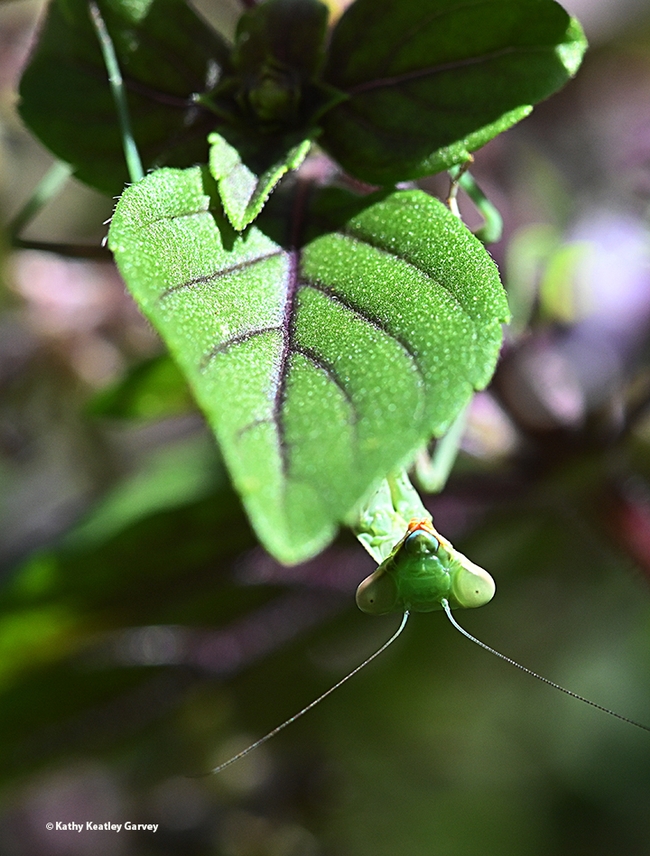
A praying mantis, a Stagmomantis limbata, hides beneath an African blue basil leaf in a Vacaville pollinator garden. (Photo by Kathy Keatley Garvey)
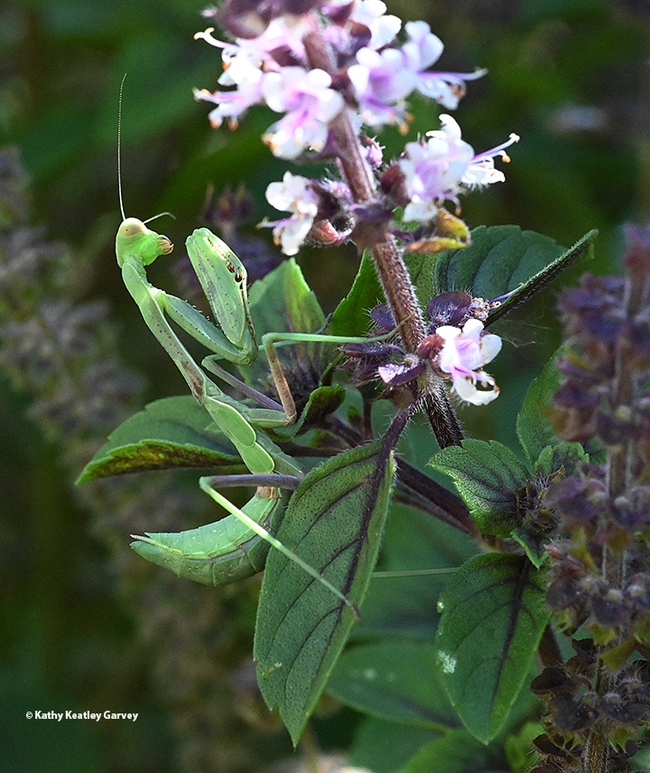
This praying mantis, a Stagmomantis limbata, hanging out in the African blue basil leaf, scouts for bees. (Photo by Kathy Keatley Garvey)
Master Beekeeper Cheryl Veretto: She Loved Bees, Plants and People
Cheryl Veretto was the first to step forward. She and 51 other beekeepers had gathered that day in September 2016 at the Harry H....
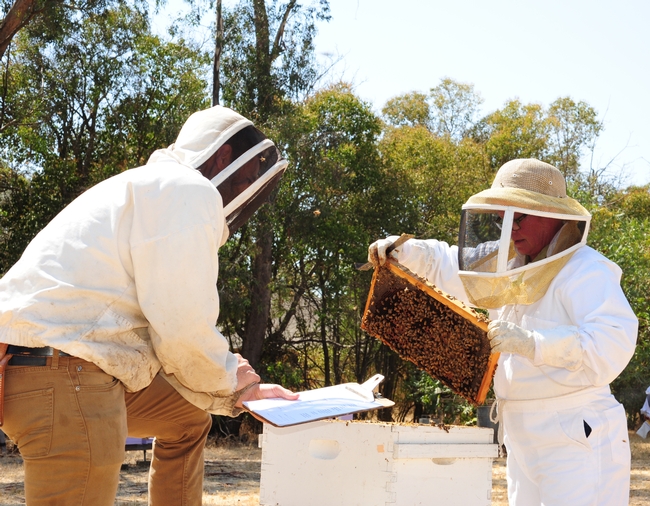
Cheryl Veretto was first in line to take the California Master Beekeeper Program practical test administered in September 2016. With her is UC Davis research associate Charley Nye, CAMBP examiner and manager of the Laidlaw facility. (Photo by Kathy Keatley Garvey)
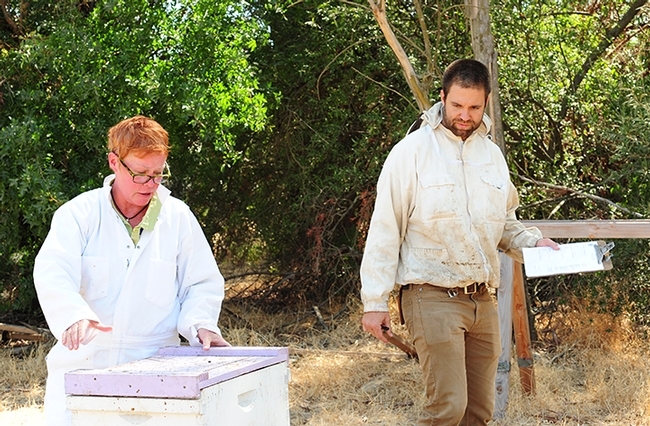
With their veils off in this portion of the CAMBP practical test, examiner Charley Nye watches Cheryl Veretto finish the last steps of her test. (Photo by Kathy Keatley Garvey)
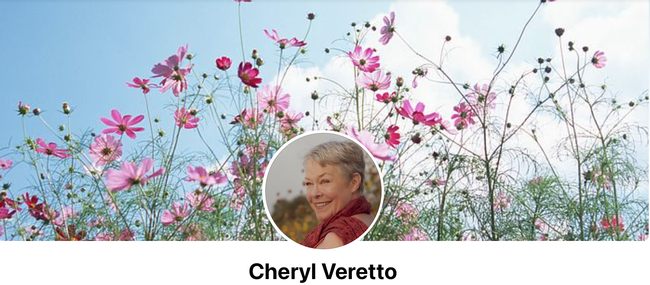
Cheryl Veretto's Facebook page.
Drought-tolerant plants can save water, but beware of those that are toxic
UC Master Gardener Francie Murphy was pruning the succulents in her San Diego front yard when an unfortunate accident catalyzed her commitment to communicating the dangers of toxic plants. She trimmed a stem on her drought-tolerant pencil milk bush and milky sap spurted into one eye, causing stinging pain.
“I tried to wipe it out, and in doing so got in both eyes. I was blinded. The pain was unbelievable,” she said.
A nearby friend rushed her to the emergency room where the doctor diagnosed chemical burns to her corneas and washed her eyes with two liters of saline water each. Murphy removed the plant from her garden, but saw it growing throughout her community.
“I knew we had to do something,” she said.
Drought-tolerant plants like cacti, yucca, agaves and aloes have adaptations to protect themselves from wildlife in search of the moisture within their leaves and stems. They have spikes or spines to ward off people and animals. Other plants don't have outward signs of danger. Fire sticks, also known as sticks on fire and pencil cactus and by its scientific name Euphorbia tirucalli, is a very popular succulent in frost-free areas. Its vertical growth habit and showy soft green to reddish-gold stems make it a striking landscape specimen. A native of southern Africa, the smooth, coral-like stems look deceptively harmless. The sap is toxic.
“Fire sticks should be planted far from walkways, in the back of the landscape, where you can see them, but not touch them,” said UC Cooperative Extension natural resources advisor Chris McDonald. “When trimming the plant, wear long pants, long sleeves and eye protection. If the plant is tall, consider protecting your face.”
After Murphy shared her story about these plants with other Master Gardeners, UCCE San Diego gathered a team and worked with colleagues to secure funding from the County of San Diego to develop a website and handouts to inform the community about readily available yet toxic drought-tolerant plants being planted into California landscapes.
The handout can be downloaded from the Plant Safely website (https://ucanr.edu/sites/PlantSafely/). The materials were quickly distributed to nurseries, garden events and Master Gardener help booths, such as at farmers markets, home shows and fairs, and other educational events. A key feature of the website is a database of nearly 100 plants (which can be found here) with photos and descriptions that explain how they are unsafe and how they can be used safely in the landscape. (https://ucanr.edu/sites/PlantSafely/Common_Names/)
Some common yet toxic landscape plants included in the database are:
|
|
|
|
|
|
|
|
|
|
|
“These potentially harmful plants are grown widely in many parts of California,” McDonald said. “It's important to promote drought-tolerant landscapes, and we must also do it in a way that preserves public health.”
View the UC Master Gardener video about safely planting fire sticks (Euphorbia tirucoli):
UC Master Gardener helps make San Diego gardens friendly and inclusive
Stephen Cantu, a UC Master Gardener in San Diego County UC Cooperative Extension, is well aware of ways to improve accessibility and inclusiveness in gardening for people with mobility issues, reported Lisa Deaderick in the San Diego Union-Tribune.
Cantu, who has used a wheelchair for 37 years due to a job site accident, identifies obstacles and solutions that help people of all abilities benefit from the joys of tending a home garden. He is active in the UCCE Master Gardener Association program that assists community members in designing garden spaces for maximum accessibility called Friendly Inclusive Gardening (FIG).
FIG teaches people how to implement the principles of universal design to make home, school and community gardens safer and more accessible to people with physical disabilities, seniors with mobility issues and young children. A workshop scheduled for March 21 had to be postponed in order to comply with efforts to reduce the spread of COVID-19, so Deaderick published a Q&A with Cantu to share how people can start a small garden at home while waiting out the coronavirus.
He said FIG is not just for wheelchair users. "In other words, a garden designed for the whole family to use, from young children to grandma and grandpa," Cantu said.
He recommends new gardeners start simple and build on success.
"Start out with a small kitchen garden of mostly herbs, something that is in small containers that you can grow next to your kitchen. . . Don't buy anything until you have an understanding of your needs. For a small garden, all you really need are your hands, a pair of gloves, some soil, and a few herbs," Cantu said.
Read the whole interview on the San Diego Union-Tribune website and find much more gardening information for many California locations on the UC Master Gardener website.


